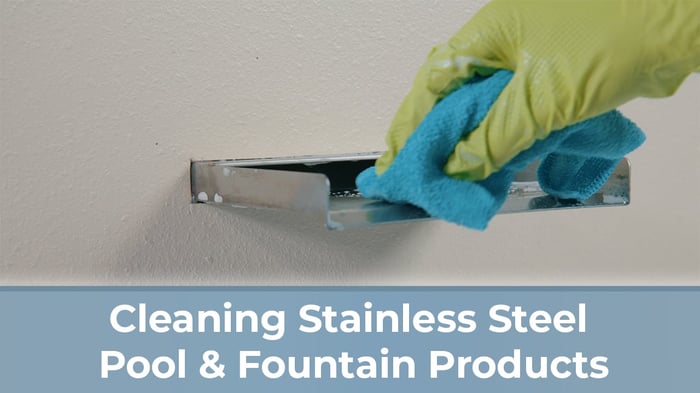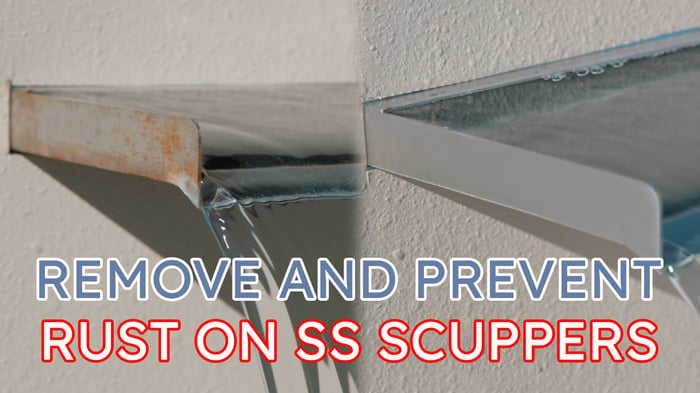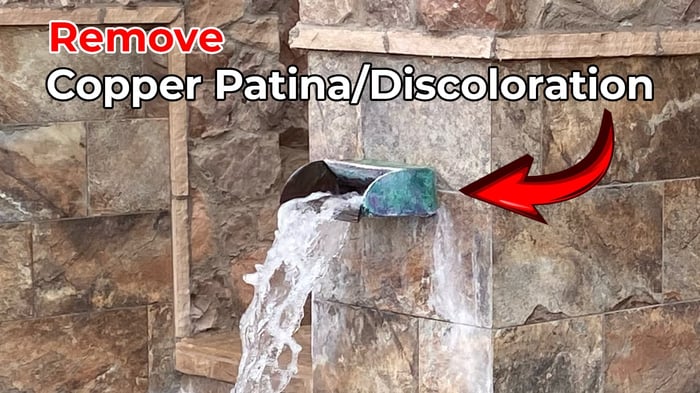| Stainless Steel Pool & Fountain Maintenance Schedule | |
|---|---|
| Process | Interval* |
| Washing Stainless Steel with Fresh Water | Weekly |
| Cleaning Stainless Steel with Soapy Water | Monthly |
| Inspect for Rust, Deposits, Dirt, Stains | Monthly |
| Re-Passivate Product | Annually or As Needed |
* Maintenance Intervals depend on the environmental conditions and may need to be adjusted for proper maintenance and the best aesthetics. Saltwater/Indoor Pools and Coastal Areas will see increased maintenance required.
A misconception with stainless steel products in pools and fountains is that they will not rust because they’re stainless steel. No matter the quality/grade of stainless steel or the processes used, stainless steel may develop surface corrosion over time. With proper care, your stainless steel water feature products will provide years of service.
What Grades is your Stainless?
Stainless steel is sold in many grades. For water feature products, you will mostly see 304 and 316 grades used. 304 is inferior and maintenance intervals may be excessive, even in fresh water fountains.
316L marine-grade stainless steel is the most common metal for pool and fountain products. Higher Chromium, Nickel and Molybdenum content make this metal alloy an ideal for pool and marine conditions. A majority of our products are made from 316L stainless steel.
For applications where rust is a continual issue or concern, we offer our products in Aerospace-grade stainless steel, on a custom order basis. This offering is significantly more corrosion resistant, but equally costly.
Passivation: A Necessary Process
Stainless steel’s corrosion resistance is gained from its passive layer that protects atmospheric elements from reaching the underlying metals that will rust and corrode. While this passive layer naturally will develop over time, to reduce the maintenance of your scuppers, we use an industrial process called “passivation” to create this corrosion barrier upon purchase.
Conditions that Accelerate Rusting of Stainless Steel in Pools & Fountains
Our products require equal or less maintenance compared to competitor products we’ve tested. To avoid future corrosion and rust and rust issues, review the conditions below that can accelerate corrosion on stainless steel.
Installation
- Scratches and damage to the finish on install will promote corrosion and surface rust. Re-passivation process needs to be completed to avoid growth of corrosion.
Pool Chemistry / Chemicals
- Do not run heavy concentrations of chemicals through scuppers. This includes on start-up and when adding chemicals. Dilute acids when adding to pools or fountains.
- Check the chemical balance of your water frequently. The more frequently you adjust the balance with chemicals, the less likely there are to be high-concentrations of chemicals that promote corrosion.
- Clear-blue water does not mean the chemicals are balanced. Having a pool service company does not mean the chemicals are balanced. We advise that you get your chemical balance checked regularly at a pool supply store like Leslie's.
- When looking at pool chemical reports seeking the issue of the corrosion, look for high salinity >3000PPM (salt water pools), high chlorine >2PPM, low pH <7.4 and low alkalinity <100PPM. These conditions accelerate corrosion of stainless steel.
- Just because your pool chemicals are balanced now, does not mean that they always were. If you’re seeing corrosion on your stainless steel products, it’s likely because of a chemical imbalance that was corrected and damaged the finish.
Bonding/Grounding
- Your stainless steel product can be corroding because of stray electrical current, if your product is not correctly grounded/bonded.
- Stray currents are more likely to travel in saltwater than fresh water and a properly installed and maintained sacrificial zinc anode is advised.
Water Quality
- Solids and calcium build up on products indicates hard water with high total dissolved solids. These water conditions can accelerate corrosion on stainless steel products and should be removed immediately.
Stagnant Water
- Our scuppers are engineered to drain when water is not flowing through them from a pump. If installed incorrectly, stagnant (standing) water can accelerate rust and build up.





